
In the same way that pediatricians are trained to meet a child’s medical needs, pediatric dentists are uniquely qualified to protect your child’s oral health. Pediatric dentists are specialists dealing with the developmental and behavioral aspects of children, and know how to make them feel comfortable, and make the experience pleasant. Also, they are trained and qualified to treat special needs patients.

Lorem ipsum dolor sit amet consectetur.

Lorem ipsum dolor sit amet consectetur.

Lorem ipsum dolor sit amet consectetur.
In order to prevent cavities and other dental problems, a check-up is recommended every six months. Your pediatric dentist can tell you when and how often your children should visit based on their personal oral health.
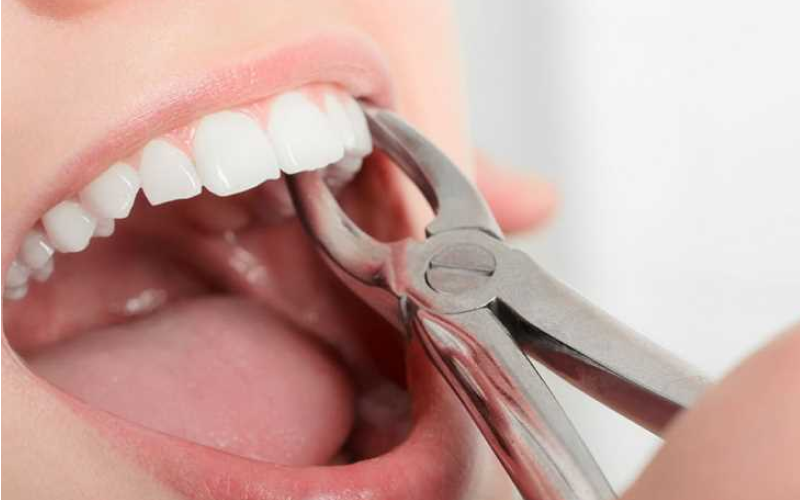
In the past, if your child had a permanent tooth with a diseased nerve, he or she would probably lose that tooth. Today, with a special dental procedure called “root canal treatment”, your child’s tooth can be saved. When a tooth is cracked or has a deep cavity, bacteria can enter the pulp tissue and germs can cause an infection inside the tooth.
Many cavities may be so deep that they extend to the nerve, often causing pain and discomfort. When this happens, the infected part of the nerve must be removed. The remaining healthy nerve will be left intact and medicated. The purpose of a pulpotomy is to extend the life of the baby tooth, thereby avoiding the need for extraction and a space maintainer, until the eruption of the permanent tooth. In other words, the tooth can be preserved for chewing food and maintaining proper space for permanent teeth, as well as helping your child to preserve a healthy, happy smile.
Children smile when they are proud of their teeth. At school and at play, they feel more confident. Ask your pediatric dentist about esthetic dentistry to restore or enhance your child’s smile. Some of the procedures available treat chipped or broken teeth, discolored teeth, mis-shapen teeth and tooth colored fillings.

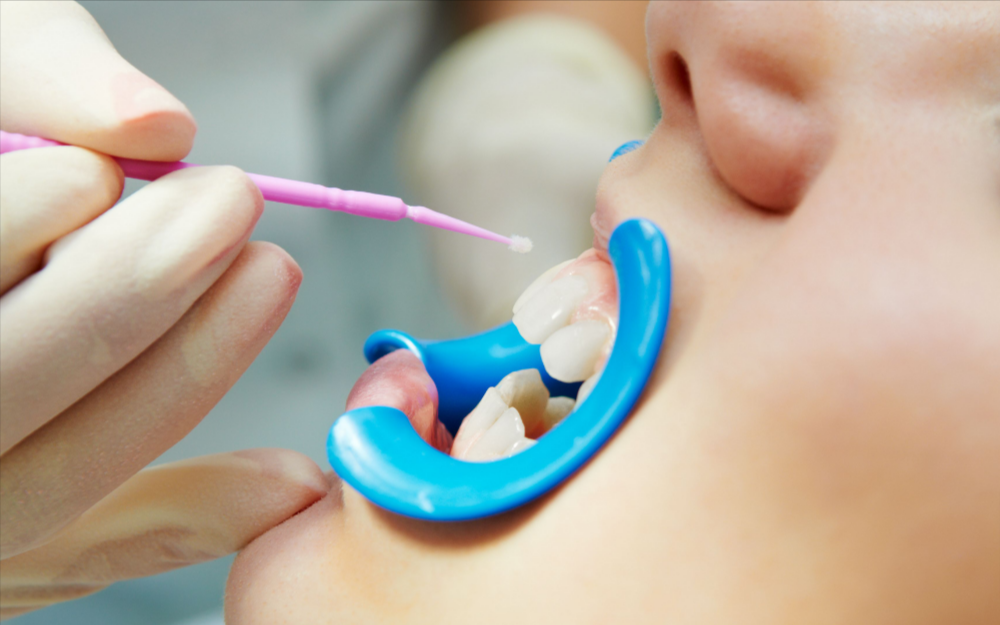
Fluoride varnishes that can be painted on the teeth are now available . Fluoride varnishes contain high concentrations of fluoride (up to 22,600 ppm) suspended in a viscous delivery medium. They can be applied to the teeth of high-risk children by trained personnel in various settings, including the medical office. Fluoride varnishes, unlike foams, rinses, and gels, do not require trays or oral suction equipment.
In the past, if your child had a permanent tooth with a diseased nerve, he or she would probably lose that tooth. Today, with a special dental procedure called “root canal treatment”, your child’s tooth can be saved. When a tooth is cracked or has a deep cavity, bacteria can enter the pulp tissue and germs can cause an infection inside the tooth.
Many cavities may be so deep that they extend to the nerve, often causing pain and discomfort. When this happens, the infected part of the nerve must be removed. The remaining healthy nerve will be left intact and medicated. The purpose of a pulpotomy is to extend the life of the baby tooth, thereby avoiding the need for extraction and a space maintainer, until the eruption of the permanent tooth. In other words, the tooth can be preserved for chewing food and maintaining proper space for permanent teeth, as well as helping your child to preserve a healthy, happy smile.
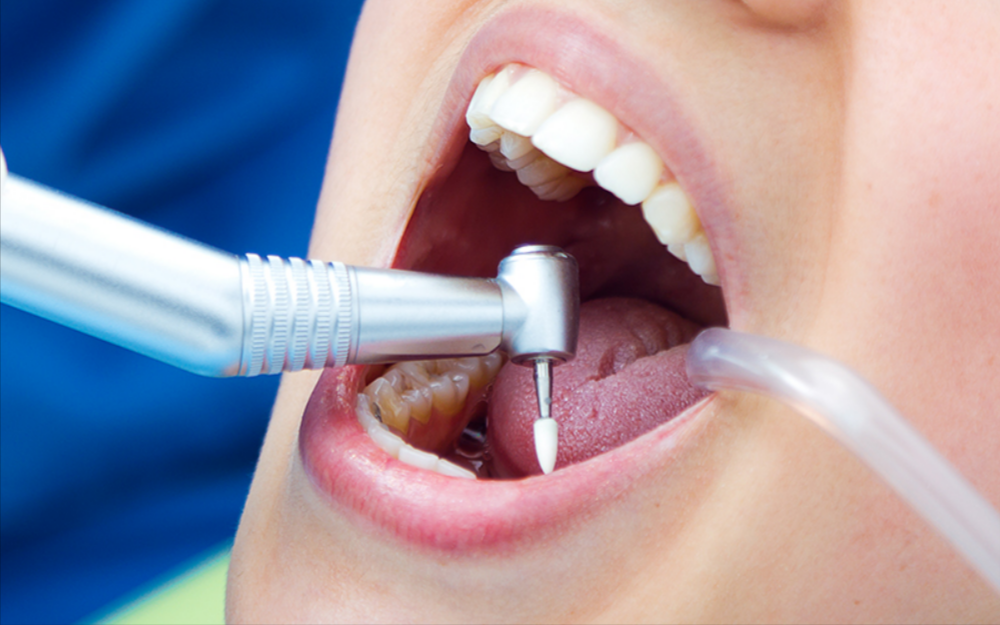
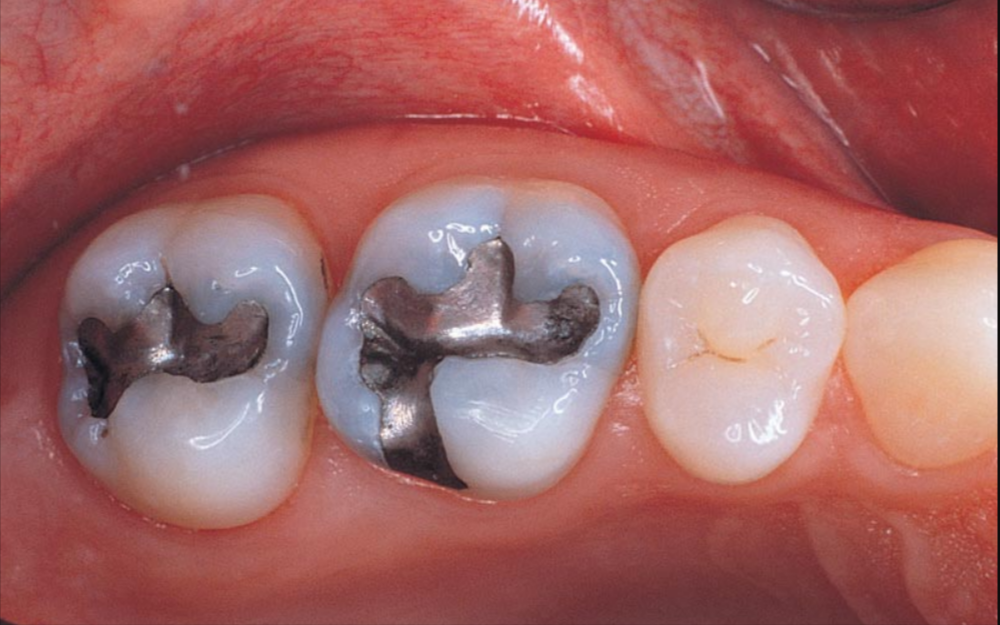
Attractive tooth coloured fillings are an option in many cases. Coloured fillings use esthetic materials such as Glass inomer and composite filling. They look more natural than other filling materials and are compatible with dental sealants. Take care of a tooth-coloured filling the same way you take care of a silver filling: Brush, floss, and visit your dentist. Talk to your pediatric dentist, together you will decide what type of filling is best for your child in each situation.
Stainless steel crowns are used to restore back teeth that are too badly decayed to hold white fillings. When tooth decay on back teeth has been left untreated, teeth may have extensive damage to the enamel, dentin and sometimes the nerve (pulp). In such cases, tooth-colored fillings are not a viable option, and stainless steel crowns for deciduous molars and zirconia crowns for front teeth incisors are necessary. These prefabricated sliver-colored crowns or Zirconia crowns are fit; then cemented onto the primary (baby) teeth to prevent further damage until these teeth are naturally lost.
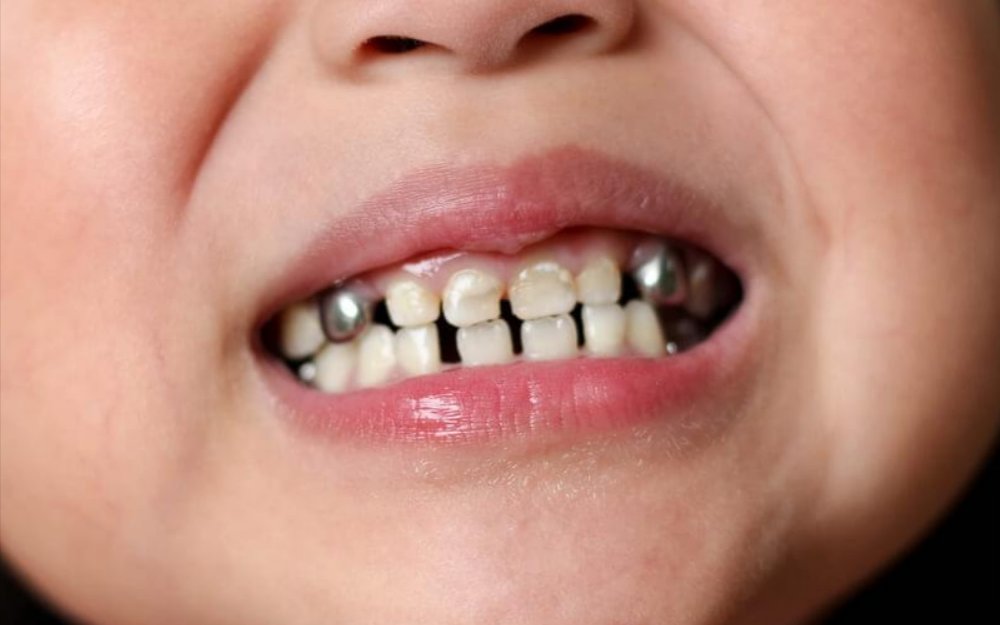

Extractions are done only as a last resort in the case of severe tooth decay. If a primary molar is removed prematurely, a space maintainer will be placed. Some extractions are needed for orthodontic reasons to help facilitate tooth alignment when crowded teeth are present. Primary teeth are essential in maintaining the correct spacing in your child’s jaw for the permanent teeth.
Dental sealants protect the chewing surfaces of back teeth where cavities occur most often for children. Sealants, composed of clear or shaded plastic, are painted onto the tiny grooves in the molars. By “sealing out” food and plaque, sealants reduce the risk of tooth decay. Sealants can be quickly and painlessly applied to any permanent teeth that are likely to develop decay on the biting surface.
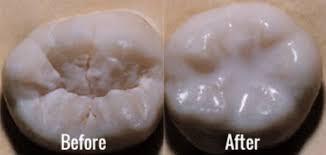
Donot throw broken parts of tooth or any avulsed tooth, it must be preserved in milk or saliva of child.
Our schedule may be delayed in order to accommodate an injured child. Please accept our apologies in advance should this occur during your appointment. We would do the same if your child were in need of emergency treatment.
If your child loses a baby tooth prematurely, a “space maintainer” may be needed to hold the space open until the permanent tooth comes in to fill it. This appliance will help your child’s bite develop properly — and hopefully avoid the need for braces later on. Learn more about Space Maintainers.
Besides being painful, a child’s sports-related dental injury can mean time lost from school and work, plus substantial cost. A properly fitted, comfortable mouthguard, worn at practice and games, can greatly reduce the likelihood of serious dental injury. Different color and design of mouthguard available.
Use a tiny smear of toothpaste for babies and a pea-sized amount for children.
Gradually start brushing your child’s teeth more thoroughly, covering all the surfaces of the teeth. Do it twice a day: just before bed, and at another time that fits in with your routine.
Not all children like having their teeth brushed, so you may have to keep trying. Don’t let it turn into a battle. Instead, make it into a game, or brush your own teeth at the same time and then help your child finish their own.
The easiest way to brush a baby’s teeth is to sit them on your knee with their head resting against your chest. With an older child, stand behind them and tilt their head upwards.
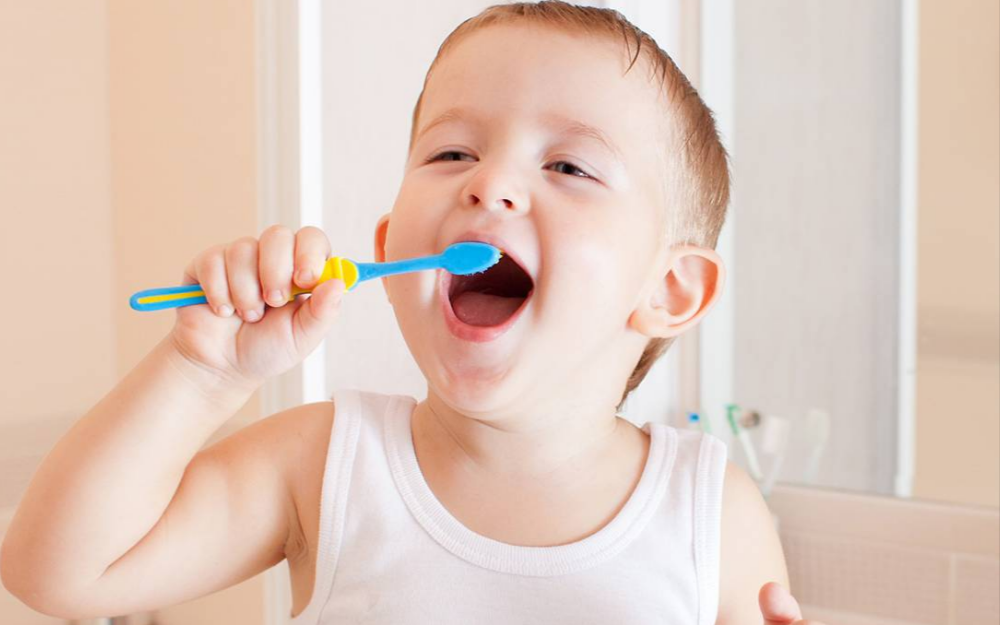
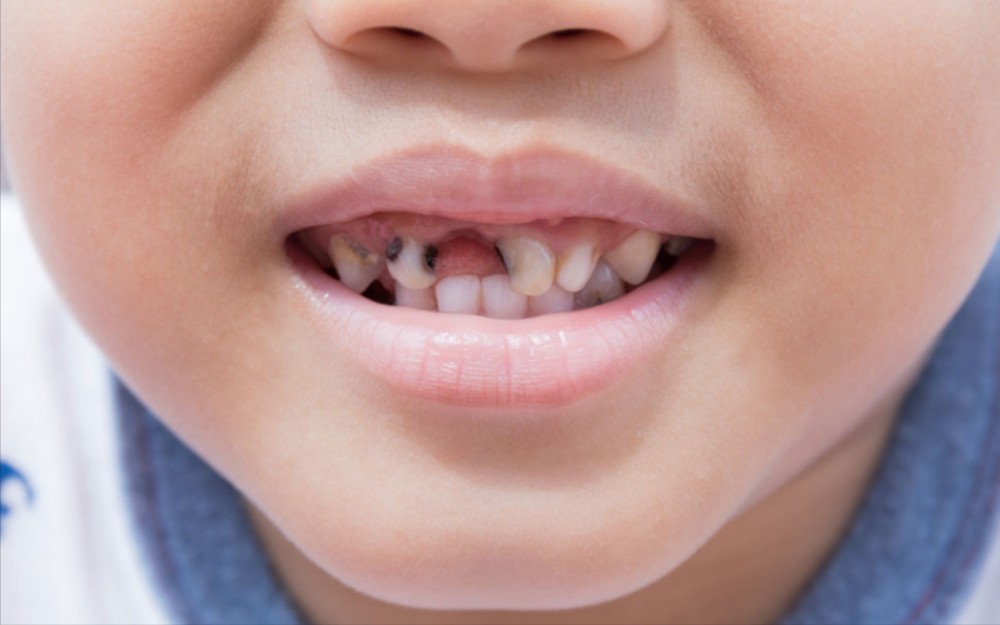
Sugar causes tooth decay. Children who eat sweets every day have nearly twice as much decay as children who eat sweets less often.
This is caused not only by the amount of sugar in sweet food and drinks, but by how often the teeth are in contact with the sugar. This means sweet drinks in a bottle or feeder cup and lollipops are particularly damaging because they bathe the teeth in sugar for long periods of time. Acidic drinks such as fruit juice and squash can harm teeth, too. This is why it’s better to give them at mealtimes, not in between.
From the time your baby is weaned, encourage them to eat savoury food. Check if there’s sugar in pre-prepared baby foods (including the savoury ones), rusks and baby drinks, especially fizzy drinks, squash and syrups.
Only give sweet foods and fruit juice at mealtimes.
Don’t give biscuits or sweets as treats. Ask relatives and friends to do the same. Use items such as stickers, badges, hair slides, crayons, small books, notebooks, colouring books, soap and bubble baths. They may be more expensive than sweets but they last longer.
If children are having sweets or chocolate, it’s less harmful for their teeth if they eat the sweets all at once and at the end of a meal rather than eating them little by little and/or between meals.
At bedtime or during the night, give your baby milk or water rather than baby juices or sugar-sweetened drinks.
If your child needs medicine, ask your pharmacist or GP if there’s a sugar-free option.
Don’t give drinks containing artificial sweeteners, such as saccharin or aspartame. If you do, dilute them with at least 10 parts water to one part concentrate.
Sucrose, glucose, dextrose, maltose, fructose and hydrolysed starch are all sugars. Invert sugar or syrup, honey, raw sugar, brown sugar, cane sugar, muscovado and concentrated fruit juices are all sugars. Maltodextrin is not a sugar, but can still cause tooth decay.